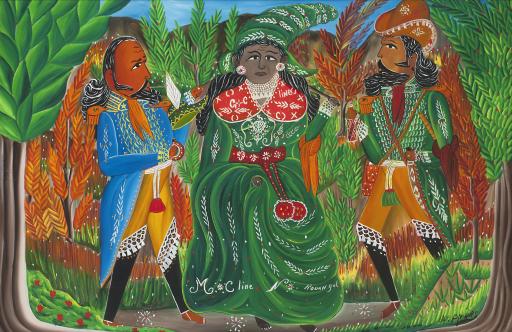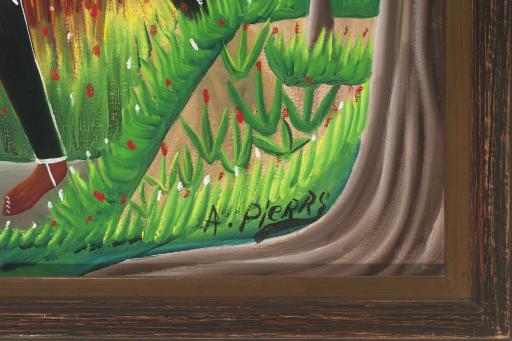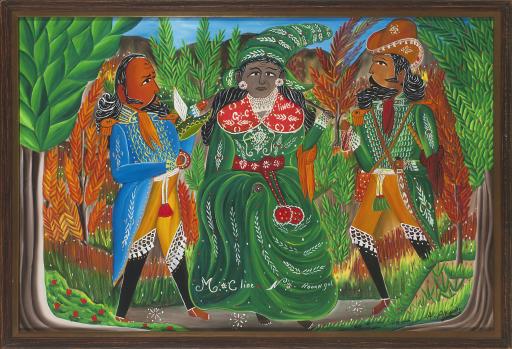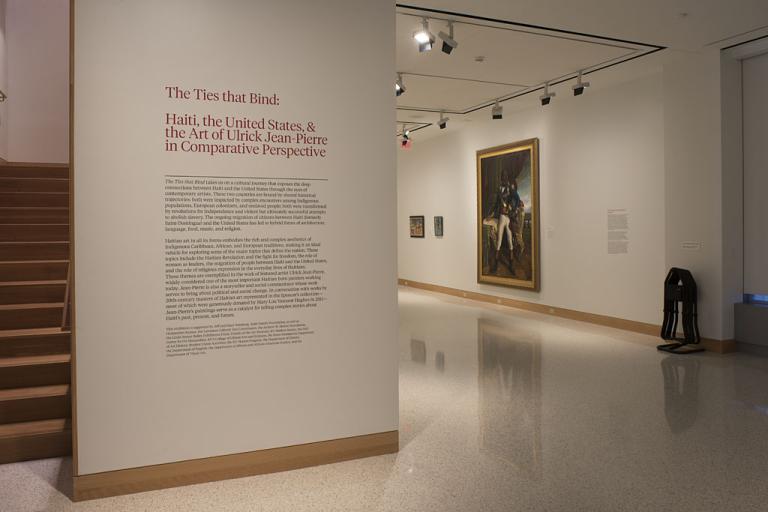Les Trois Esprits d'Nago (The Three Spirits of Nago), André Pierre
Artwork Overview
André Pierre, artist
1914–2005, active 1940s–2004
Les Trois Esprits d'Nago (The Three Spirits of Nago),
circa 1972
Where object was made: Haiti
Material/technique: possibly canvas; oil
Dimensions:
Canvas/Support (Height x Width x Depth): 61 x 91 cm
Canvas/Support (Height x Width x Depth): 24 x 35 13/16 in
Frame Dimensions (Height x Width x Depth): 26 x 38 x 2 in
Canvas/Support (Height x Width x Depth): 61 x 91 cm
Canvas/Support (Height x Width x Depth): 24 x 35 13/16 in
Frame Dimensions (Height x Width x Depth): 26 x 38 x 2 in
Credit line: Mary Lou Vansant Hughes Collection
Accession number: 2011.0317
Not on display
If you wish to reproduce this image, please submit an image request








